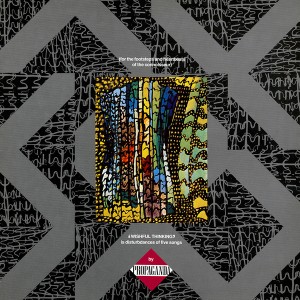 Behind the shiny, fun, tabloid version of the 1980s, there was an undercurrent of protest, upheaval and misogyny.
Behind the shiny, fun, tabloid version of the 1980s, there was an undercurrent of protest, upheaval and misogyny.
In the latter camp, how about the following astonishing UK laws still enshrined at the dawn of the decade: men had a right to have sex with their wives without consent. Welfare benefits were paid to married women via their husbands.
A fascinating new exhibition at London’s Tate Britain investigates the woman artists and activists whose work was a reaction to these and other issues. There’s a strong presence for punk, post-punk and industrial musicians: Gina Birch of The Raincoats, Throbbing Gristle’s Cosey Fanni Tutti and Poly Styrene of X-Ray Spex. We see fanzines, posters, gig excerpts.
There’s groundbreaking video art – Vivienne Dick’s ‘Two Little Pigeons’ and Birch’s scream are particularly memorable. We see banners, collages, sculptures and newsletters produced by the women who marched from Cardiff to Greenham Common in September 1981, challenging the decision to house 96 nuclear missiles on the site.
There’s a focus on the British Black Arts Movement, a group of artists who gathered in the wake of various uprisings in the early 1980s, from Toxteth to Brixton, and also Four Indian Women Artists, the first UK exhibition organised by and exclusively featuring women of colour.
Margaret Thatcher cut arts funding drastically in the mid-’80s, a decision which ushered in corporate sponsorship and prompted a backlash from many woman artists who began to show their work in local spaces, community centres, libraries, cafes and homes. We see much of this material and learn about its contexts.
And then of course there are the famous sexist advertising billboards, wittily defaced.

The exhibition constantly undermines Thatcher’s comment to Woman’s Own magazine in 1987 that ‘there’s no such thing as society’. And there’s a surprise around every corner. It’s moving, amusing, disturbing and educational in equal measures, and a reminder that protest and assemblage can create change. But the exhibition is also very large and probably takes two visits to really appreciate.
Women In Revolt! runs at the Tate Britain until 7 April 2024. A new podcast interviews some of the key artists.

